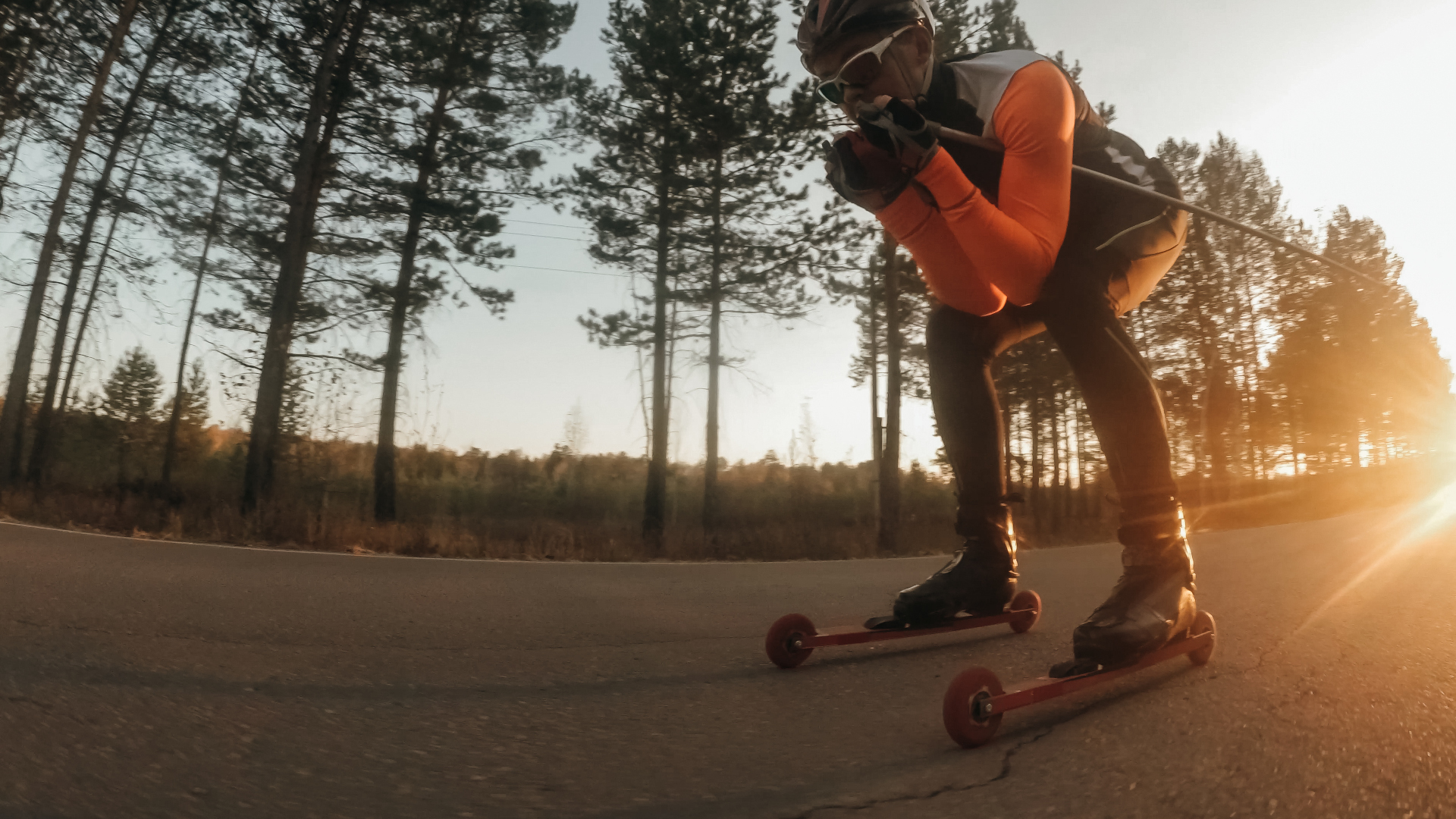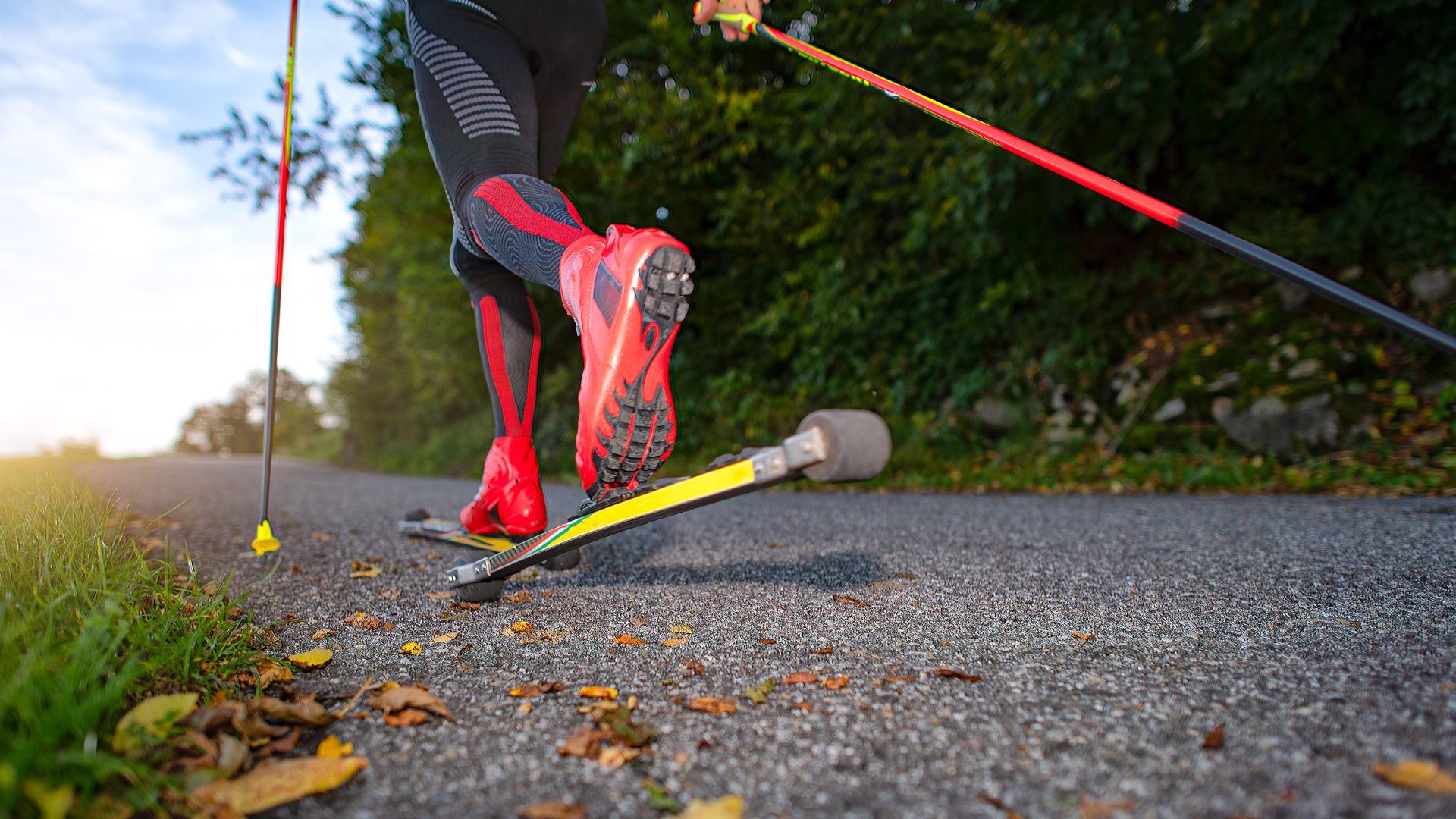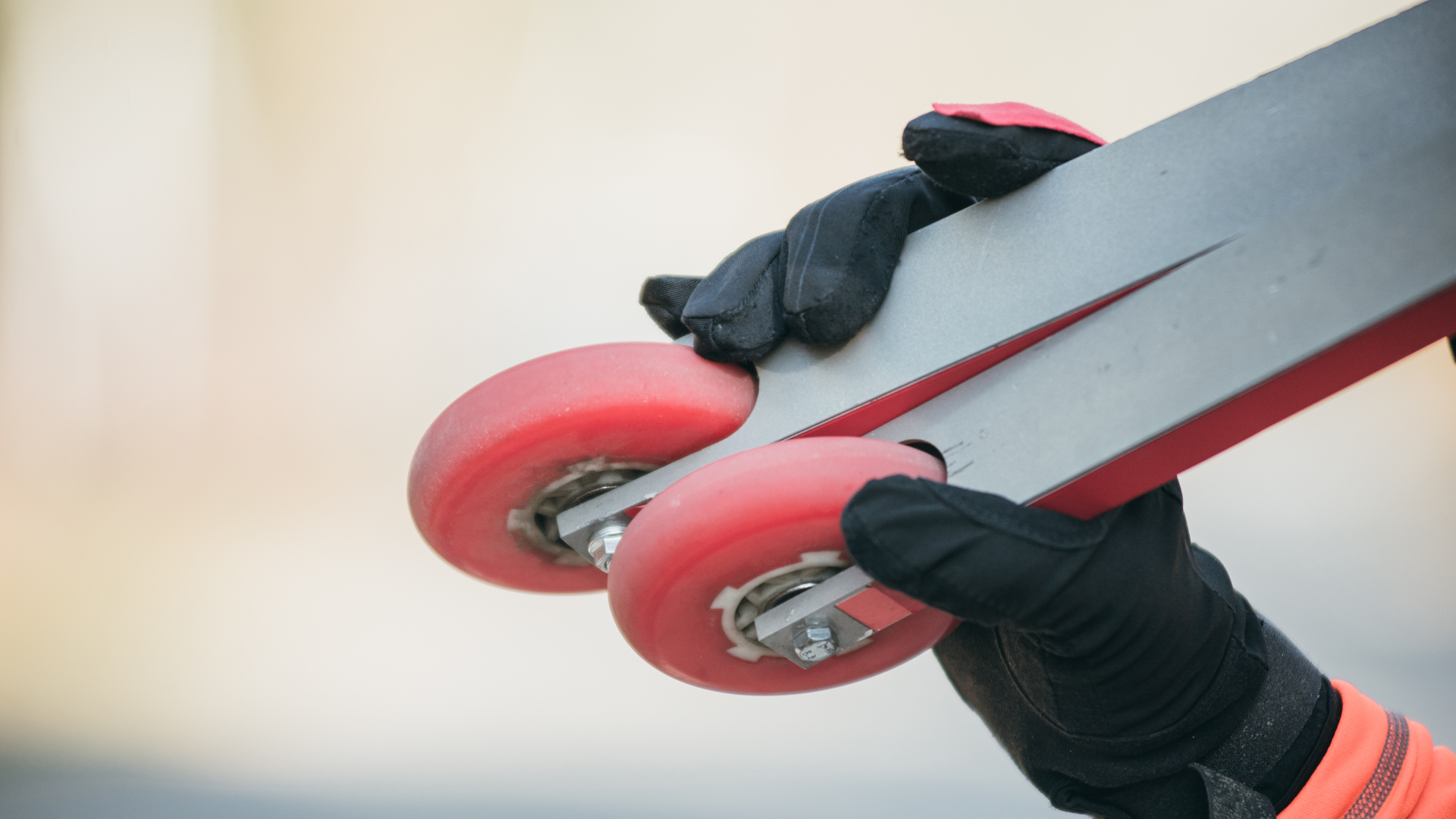What is roller skiing? How to ski snow-free
What is roller skiing? We unveil the only type of skiing you don’t need snow for and explain what you need to get started

You’ve heard of roller skating and cross country skiing, but what is roller skiing? Welcome to the only type of skiing you can do without snow.
You read that right. Roller skiing is a sport that involves short skis with wheels on each end that allow you to perform the same movement as cross country skiing, but on a hard surface rather than snow.
The first roller skis appeared in Europe in the mid-1930s and featured one wheel in the front and two in the back. The technique was developed as a form of dryland training, allowing serious cross country skiers to work on their technique during the summer months. Later, the skis were refined to have just two wheels – one in the front and one in the back – and roller skiing has become something of a sport in its own right with competitions taking place in various countries.
Today, roller skiing allows you to enjoy all of the amazing benefits of cross country skiing year-round, whether or not you actually plan to ski come winter.
How difficult is roller skiing?

It’s always difficult to give a definite answer to a subjective question. Roller skis are tricky to balance on, so if you’ve never skied before there will be a bit of a learning curve. That said, you also don’t have to negotiate challenging aspects of skiing like snowy terrain and cold weather, so there will be some aspects of it that are easier.
The technique is really very similar to cross country skiing technique, so if you’re already a skier and you’re taking up roller skiing as a form of dryland training to support your next ski season, you’ll probably find you pick it up quite quickly.
Where can you go roller skiing?

You need a smooth, hard surface like tarmac for roller skiing, however that doesn’t mean you can do it on any old public sidewalk or road. There are a few dedicated roller skiing facilities around but these are rare. Look for a wider path, such as a recreation path or bike path, which has grassy terrain on either side that you can fall into safely if you need to.
All the latest inspiration, tips and guides to help you plan your next Advnture!
Because of the nature of roller skiing and the type of terrain you’ll be on, you’ll want to save it for dry days when there is no rain or ice in the forecast.
What do you need for roller skiing?

In addition to a pair of roller skis, you’ll just use the same boots, bindings and poles that you use for regular cross country skiing. Because you’re going to be doing it on a hard surface, you’ll also want elbow and knee pads and a helmet.
Your clothing will depend on the temperature and season, but you don’t need to dress for cross country skiing; rather, you can just wear clothes you can move easily in like running shorts or leggings and a running top.
Julia Clarke is a staff writer for Advnture.com and the author of the book Restorative Yoga for Beginners. She loves to explore mountains on foot, bike, skis and belay and then recover on the the yoga mat. Julia graduated with a degree in journalism in 2004 and spent eight years working as a radio presenter in Kansas City, Vermont, Boston and New York City before discovering the joys of the Rocky Mountains. She then detoured west to Colorado and enjoyed 11 years teaching yoga in Vail before returning to her hometown of Glasgow, Scotland in 2020 to focus on family and writing.

